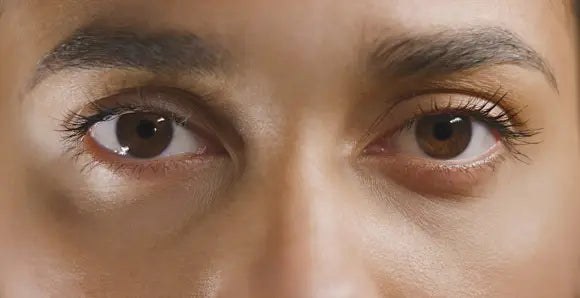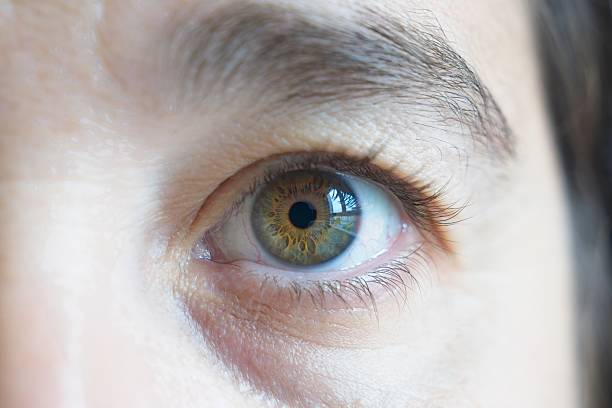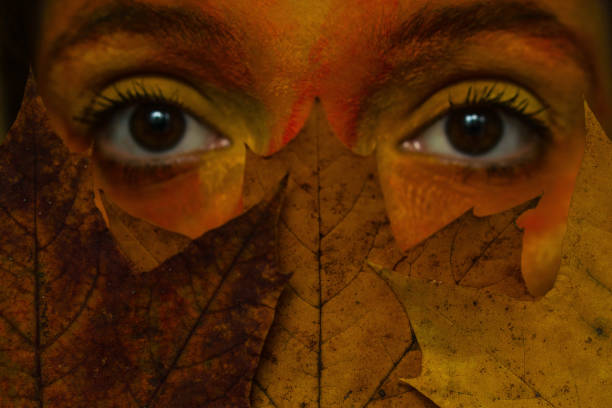Your Cart is Empty
The Eyes Have It: Can You Really See Love or Hate in Someone's Gaze?

Have you ever locked eyes with someone and felt an instant connection? Or perhaps you've encountered a piercing stare that sent chills down your spine? The age-old saying "the eyes are the window to the soul" has captivated our imagination for centuries. But can you really see love or hate in someone's eyes? Let's dive deep into the fascinating world of eye communication and explore the science, myths, and realities behind this intriguing concept.
The Science Behind Eye Communication
Our eyes are more than just organs for sight; they're powerful tools for non-verbal communication. The human eye is a complex structure, capable of conveying a wide range of emotions and intentions. Research has shown that eye contact activates specific brain regions associated with social interaction and emotional processing.
When we make eye contact, our brains release oxytocin, often called the "love hormone." This chemical plays a crucial role in bonding and trust-building. Simultaneously, the pupils dilate, allowing more light to enter the eye – a physiological response that can be triggered by various emotional states, including attraction and fear.
Decoding Emotions Through Eye Contact
Eye contact is a fundamental aspect of human interaction. It can convey attention, interest, and emotional states. But how accurate are we at interpreting these signals?
Studies have shown that humans are remarkably adept at recognizing basic emotions through facial expressions, including the eyes. However, the interpretation of complex emotions like love or hate solely through eye contact is far more nuanced and prone to misinterpretation.
Love in the Eyes: Fact or Fiction?
The idea of "love at first sight" has been romanticized in literature and pop culture for ages. But is there any truth to seeing love in someone's eyes?
While it's challenging to definitively say that love can be seen in the eyes, certain cues can indicate attraction or affection:
-
Prolonged eye contact
-
Dilated pupils
-
Softened gaze
-
Increased blinking rate
These signs, combined with other body language cues, may suggest romantic interest. However, it's crucial to remember that these signals can be misinterpreted or influenced by various factors, including lighting conditions and individual differences.
Hate and Anger: Can Eyes Really Show Hostility?
Just as we associate certain eye behaviors with love, we often attribute hostile emotions to specific eye expressions. A narrowed gaze, intense staring, or rapid eye movements are commonly associated with anger or hatred.
While these cues can indeed indicate negative emotions, it's important to consider the full context of the situation and other accompanying facial expressions before jumping to conclusions. Cultural differences and personal experiences can significantly influence how we interpret these signals.
Cultural Differences in Eye Expression Interpretation
It's fascinating to note that eye contact norms and interpretations vary widely across cultures. For instance:
-
In many Western cultures, direct eye contact is seen as a sign of confidence and honesty.
-
In some East Asian cultures, prolonged eye contact may be considered disrespectful or confrontational.
-
Middle Eastern cultures often value intense eye contact as a sign of sincerity and engagement.
These cultural nuances highlight the importance of considering cultural context when interpreting eye expressions, especially in our increasingly globalized world.
The Role of Pupil Dilation in Emotional Expression
Pupil dilation is an involuntary response controlled by the autonomic nervous system. It occurs not only in response to changes in light but also due to emotional arousal, cognitive load, and even decision-making processes.
Research has shown that our pupils tend to dilate when we view something or someone we find attractive. This physiological response is subtle and often unconscious, making it a potentially more reliable indicator of emotional states than consciously controlled facial expressions.
However, it's important to note that pupil dilation can also occur due to other factors such as stress, fear, or even certain medications. Therefore, while it can be an interesting cue, it shouldn't be relied upon in isolation to determine someone's emotional state.
Eye Photography: Capturing Emotions Through the Lens
The allure of the human eye has not been lost on photographers. Eye photography, particularly iris photography, has gained popularity as a unique form of portraiture. These close-up shots of the human eye can reveal intricate patterns and colors, often evoking a sense of depth and mystery.
Some photographers specialize in couple eyes art, capturing intimate moments between partners through their gazes. These images can be powerful, often conveying a sense of connection and emotion that transcends words.
However, it's important to remember that while eye photography can be visually stunning, it doesn't necessarily capture or prove the existence of specific emotions like love or hate. Instead, it offers an artistic interpretation of the eye's beauty and complexity.
Practical Applications: Reading Eyes in Daily Life
While we can't definitively read love or hate in someone's eyes, understanding eye communication can be valuable in various aspects of life:
-
Interpersonal relationships: Being attuned to eye contact can help you gauge interest, attention, and emotional states in personal interactions.
-
Professional settings: In business meetings or interviews, eye contact can convey confidence and engagement.
-
Public speaking: Maintaining appropriate eye contact with your audience can enhance your connection and impact.
-
Conflict resolution: Recognizing signs of discomfort or aggression through eye expressions can help de-escalate tense situations.
-
Child development: Understanding a child's eye contact patterns can provide insights into their social and emotional development.
Conclusion
So, can you really see love or hate in someone's eyes? The answer isn't a simple yes or no. While our eyes are indeed powerful communicators of emotion, interpreting complex feelings like love or hate solely through eye contact is an oversimplification.
Our eyes, in conjunction with other facial expressions and body language, can certainly provide clues about our emotional states. However, these cues are subject to individual, cultural, and contextual variations.
The next time you find yourself gazing into someone's eyes, remember that while they may not be a direct window to the soul, they are undoubtedly a fascinating portal to our complex emotional world. So keep your eyes open – you never know what you might discover in someone's gaze!
Leave a comment
Comments will be approved before showing up.




